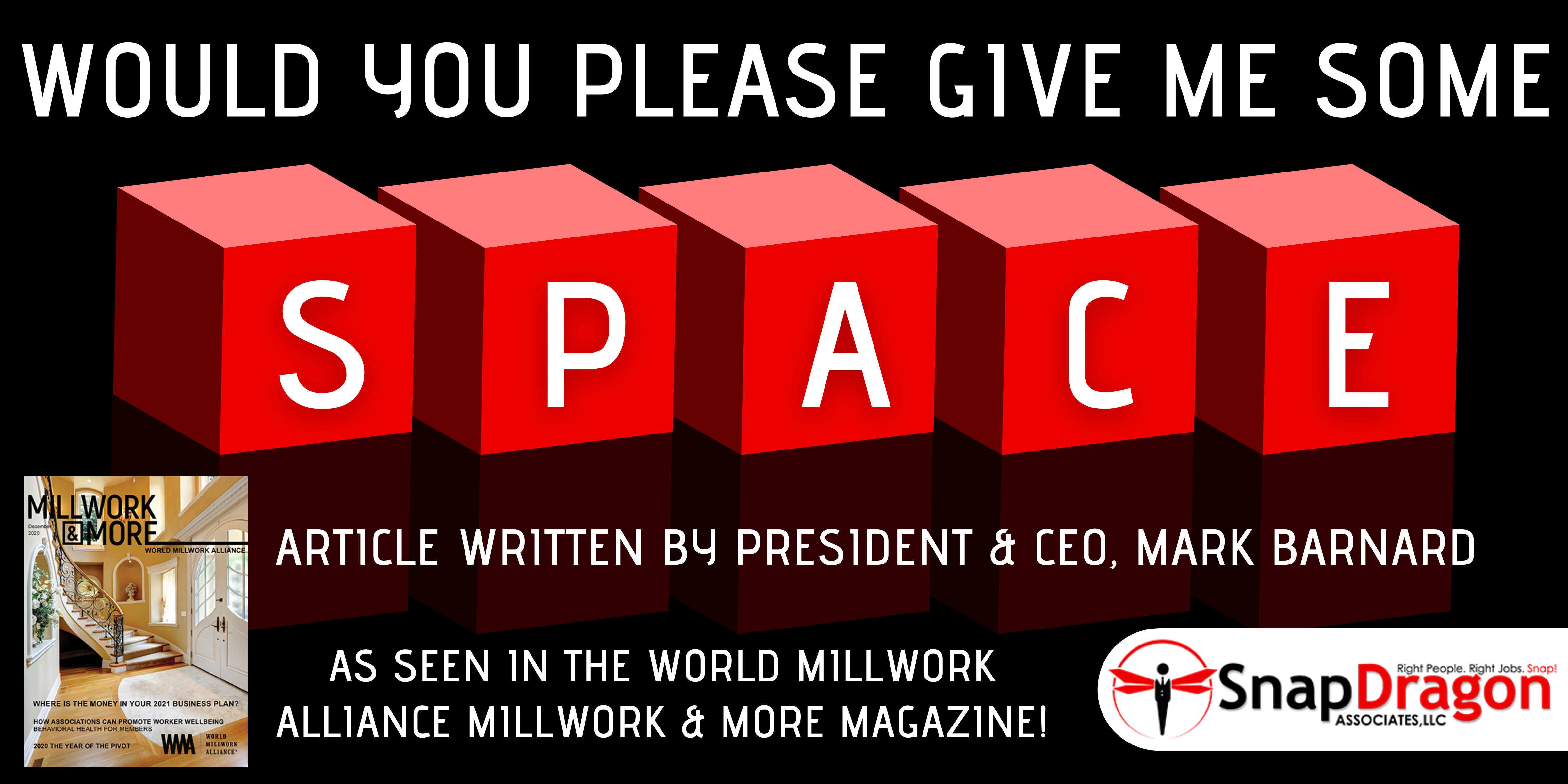WOULD YOU PLEASE GIVE ME SOME SPACE?
Posted on December 18, 2020


I am always amazed at how many people hire employees with literally no thought as to whom it is that they wish to hire. No preparation on what the company really needs, what kind of person will do well in the role or what the company needs this role to accomplish. What seems so obvious to me, but lacking from many hiring managers, is the need to develop specific details, characteristics, skillset, network and vetting on each candidate to ensure that you will be (1) Hiring the best candidate possible and (2) Avoid hiring a dud.
We use an acronym here called SPACE each time we vet candidates for our clients, no matter the position. SPACE is a simple way to make certain you hire the best fit for your organization and ensure you hire a long-term candidate who is going to make a positive impact.
S-Skillset: You need this piece to even be considered for a role . . . education, work history, certificates, industry knowledge, experience, licensure, ability, etc. This part is just the start and is the beginning of what is needed by a candidate to even be invited to talk. The skillset is the easy one, and where most companies focus a ton of time on; but it is not the most important. Many companies think that as long as the candidate has the skillset for the role on paper, it automatically makes them a good fit for the open role. This is the furthest thing from the case – it’s simply just a piece of the puzzle.
P-Performance: Examples or metrics of what the candidate did in his/her current role or past roles that made a quantitative impact. Sales increases, profit improvement, product development, cost improvement, decreased turnover or cost cutting; anything that was a positive improvement to the company’s bottom line. We all want the superstar candidate, but do we take enough time to find out what quantitative results the candidate made or is making? Answer is no, not enough. Most resumes talk about duties and responsibilities but never talk enough about what the candidate accomplished while they were in each role. If they were on the job for 10 years, it would be worth hearing what impacts to the company’s success they made. Quantify to justify.
A – Attitude: Does the candidate seem to have a great attitude towards his past jobs, his co-workers, and employers? Do they seem to “want” to be part of your team? Positive attitude is always a must have and something each company should strive for.
C- Culture Fit: How has the candidate successfully worked in the past? In a team, as a lone wolf, with little management or with a ton of oversight? How do they like to be managed, how do they take criticism, what excites them, what do they feel is important in a new role? Who were their favorite or least-favorite bosses and why? How does their work impact their family life? Why are they looking to make a career jump in the first place? Ask a lot of questions on how this person works, the kind of person they are and compare that description to your company culture. Really dig in during this part of the process as it is one of the key pieces to consider. Think about it; we spend 40-50 hours a week with the people we work with. Making sure that person will jive with your group is critical. The absolute worst hire is one where the new hire does not fit your culture.
E- Evidence: Ask for examples, reports, reference letters, copies of certificates, diplomas, etc. You need real proof of what they said they have in terms of skillset, successes, and culture. While it may be uncomfortable to ask, you cannot afford to not ask.
There you have it; a quick, simple way to make sure your next hire is better than the last and guarantee that you do it right the first time, not the third. Keep SPACE in mind and make sure your hiring team does as well and you’ll improve your hiring success.
To read the article in the Millwork & More Magazine, go to page 20 here: http://ow.ly/f6QZ30rpeXq





